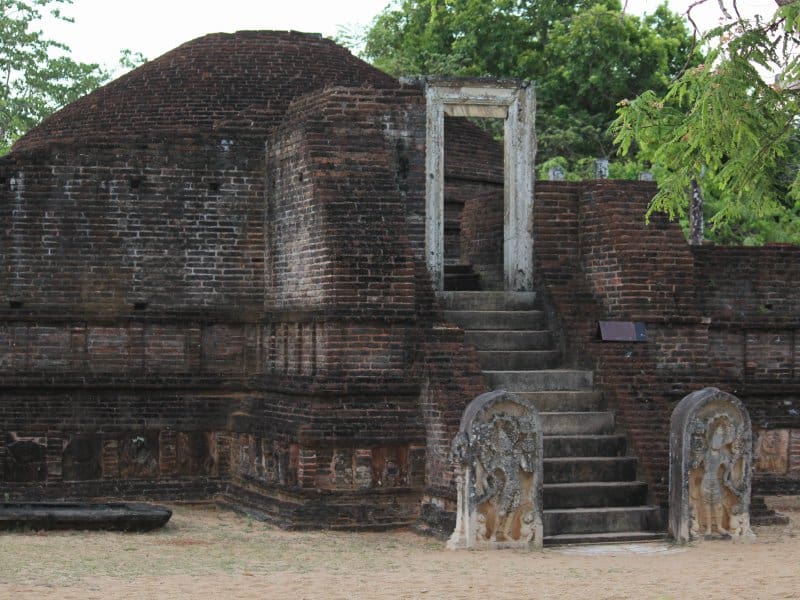Today the site of the Menik Vehera monastic complex is a collection of ruins that date back to the 8th Century AD, towards the end of the Anuradhapura era albeit it is in the vicinity of Polonnaruwa. The actual ancient name of this place is unknown. It was built in two stages, one including the small brick stupa on an incredibly high terraced platform in the middle of the complex and the second stage included the additions made in later years that were made to the complex.
The other structures in the Menik Vehera complex include the refectory, the actual living quarters of the monastery itself, and the image-houses. To be found on one of the higher terraces is a wonderful rare form of art, a collection of terracotta tiles edged into the wall and the doorframe. Each tile is carved with a lion with grinning, disturbingly humanoid facial features. Their style as a whole is rather unusual as a whole, with their massive, glaring eyes and rather rounded features. The little stupa is shaped somewhat like a lotus itself, a style unseen in the rest of the country.
At the base of the platform are the moonstone-erect guardian stone and balustrade ensemble that is a ubiquitous feature across the country’s main large monastic and palace complexes. Normally on a naga guard stone, we find a bull carved into the side but in the case of this one, there is an elephant.
Also, there are image houses in the Menik Vehera monastic complex, including one that preserves a collection of well-carved Buddha images.
The image house as a whole is missing its roof and it still preserves the remnants of its pillars standing as they did, sans their capitals and bases. The main structure of the image-house is made of brick and the statues here are three erect, standing ones and one in meditation. The middle statue is the one that is best preserved, as it includes the head. However, it lacks hands. The other two are both handless and headless and are not in good condition, the stone having been discolored and cracked over the ages. The naga guardian stones at the entrance of the image-house are greatly eroded and the normally beautiful details found in the stupa terrace area are absent.
Written by Vasika Udurawane for Travel Lanka Compass



0 Comment